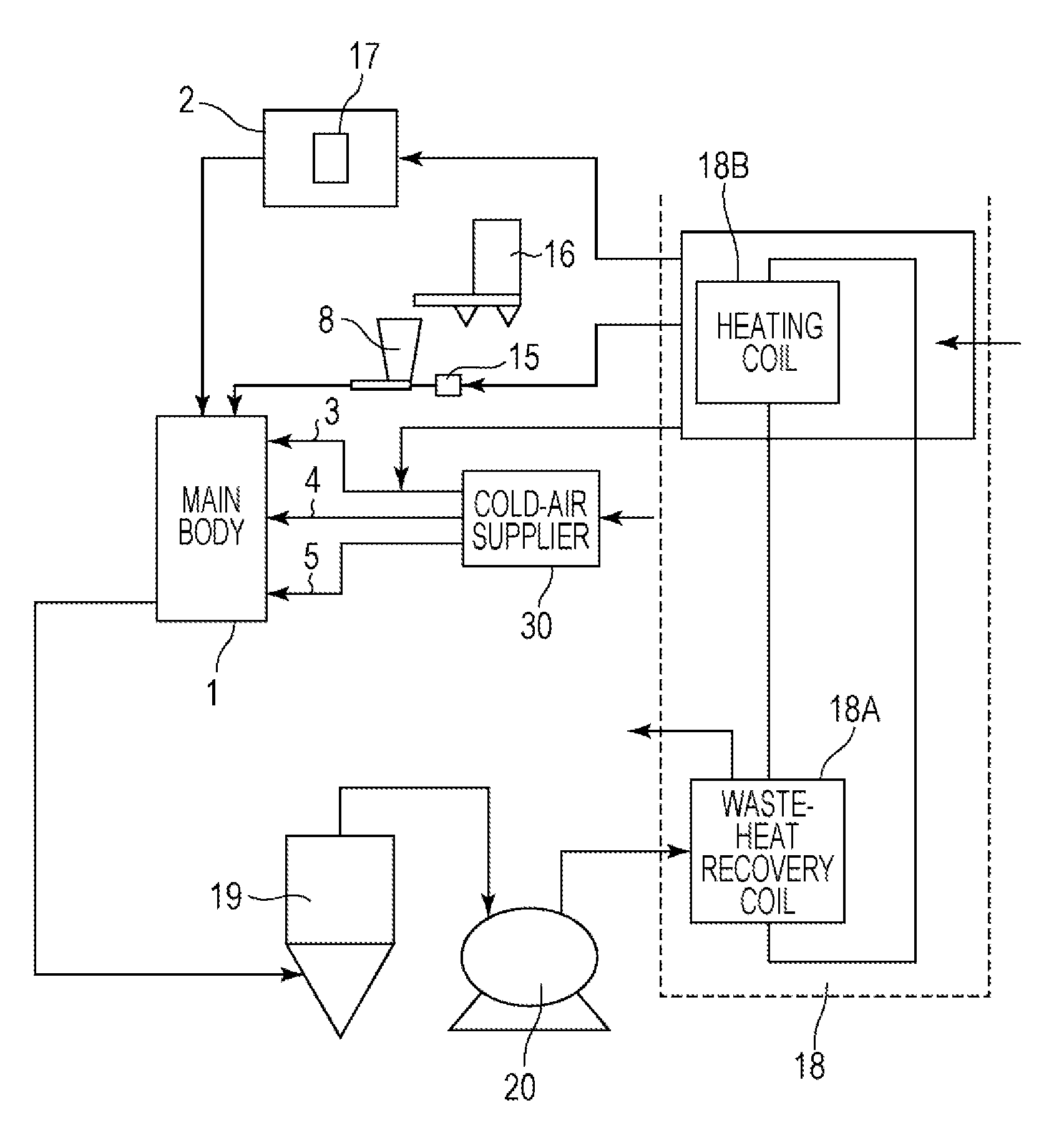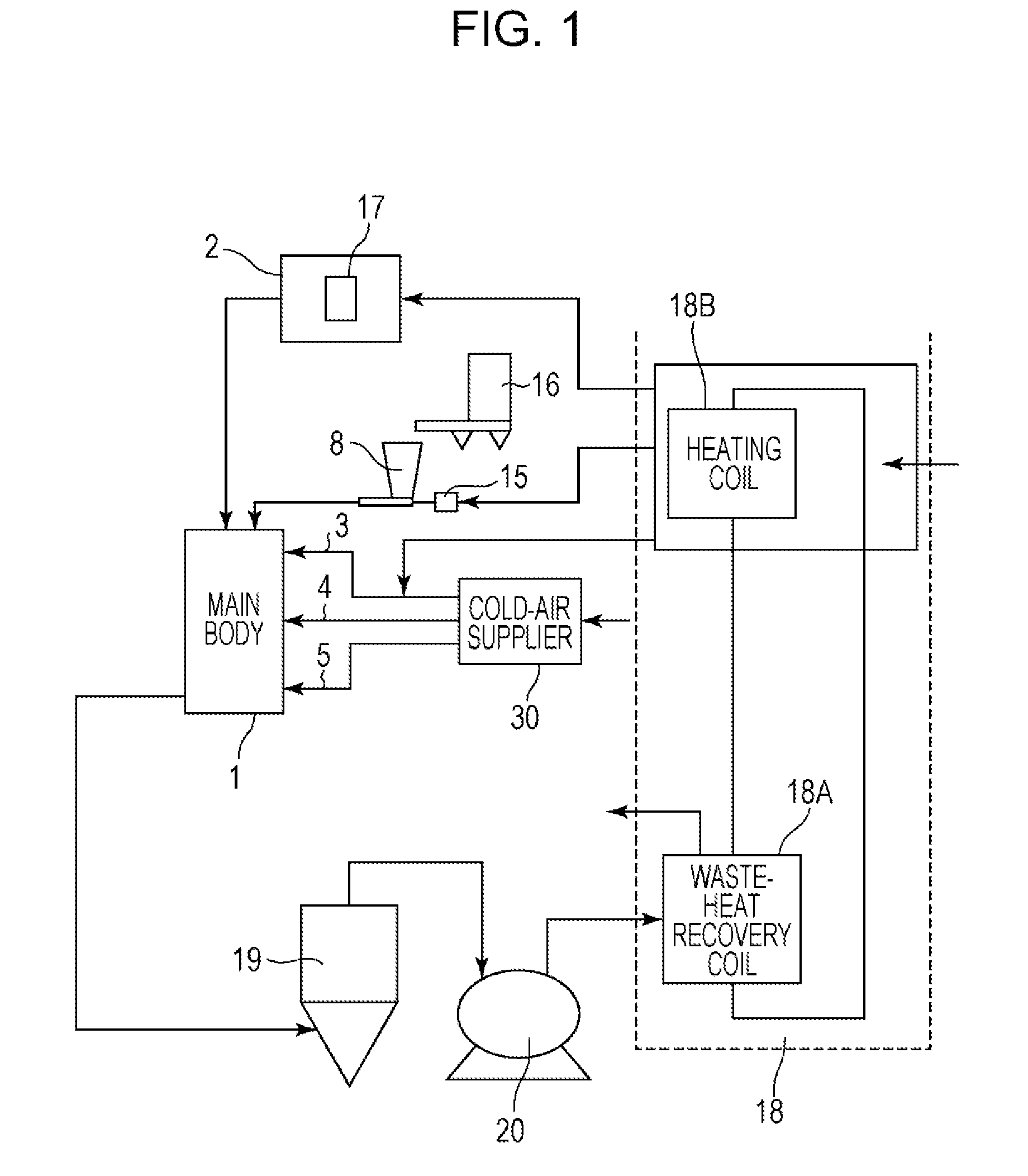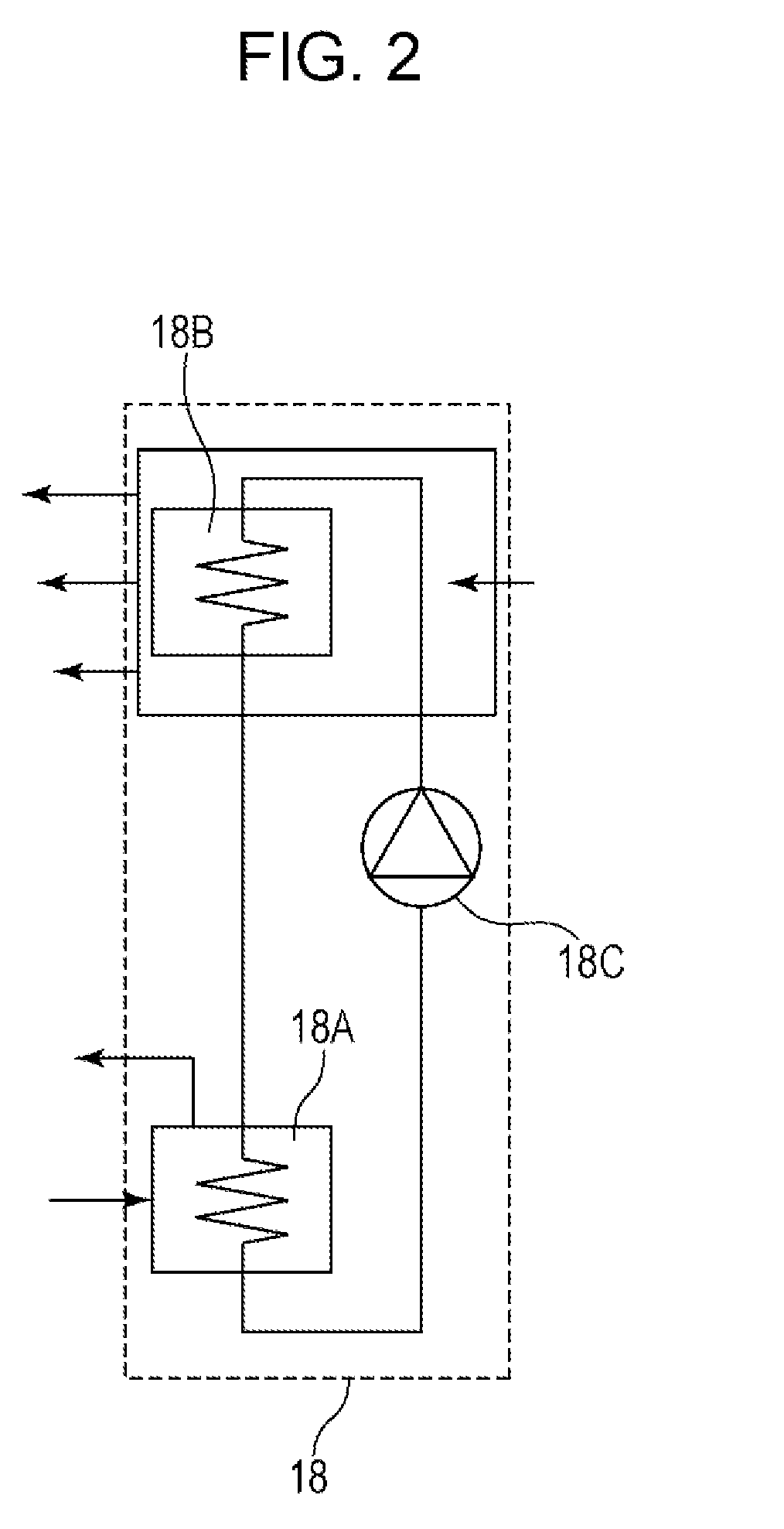Apparatus for heat-treating toner and method for producing toner
a technology of toner and apparatus, applied in the field of apparatus for heat-treating toner, can solve the problems of increasing the amount of heat consumed, so as to reduce the energy required for heat treatment, reduce environmental load, and reduce the effect of energy consumption
- Summary
- Abstract
- Description
- Claims
- Application Information
AI Technical Summary
Benefits of technology
Problems solved by technology
Method used
Image
Examples
example 1
[0097]In this example, the apparatus for heat-treating a toner had a structure such that heat recovered by the waste-heat recovery and supply unit was used for the hot-air supply unit, the first cold-air supply unit, and the raw-material supply unit on the basis of the production procedure illustrated in FIG. 1. The main body of the heat-treatment apparatus illustrated in FIGS. 4A to 4C was used. Toner particles A (raw-material toner) were heat-treated with the apparatus for heat-treating a toner described above.
[0098]The waste-heat recovery and supply unit illustrated in FIG. 2 had a recovery capacity of 10 kW. The heater used in the hot-air supply unit had a rated heater capacity of 115 kW.
[0099]The throughput was 15 kg / hr. The operating time was 6 hours after the hot-air temperature was stabilized and the liquid temperature in the waste-heat recovery and supply unit was also stabilized. Furthermore, operating conditions were adjusted in such a manner that treated toner particles ...
example 2
[0103]In this example, with respect to the production procedure illustrated in FIG. 1, heat recovered was used for the hot-air supply unit and the raw-material supply unit. Toner particles A were heat-treated as in EXAMPLE 1 in such a manner that heat-treated toner particles A had an average circularity of 0.970, except that the operating conditions were changed as described in Table 1. Table 2 illustrates the operation results.
[0104]The resulting toner particles had a weight-average particle size of 5.9 μm, in which the proportion of particles having a particle size of 4.0 μm or less was 24.2% by number, and the proportion of particles having a particle size of 10.0 μm or more was 2.1% by volume.
example 3
[0105]In this example, with respect to the production procedure illustrated in FIG. 1, heat recovered was used for the hot-air supply unit. Toner particles A were heat-treated as in EXAMPLE 1 in such a manner that heat-treated toner particles A had an average circularity of 0.970, except that the operating conditions were changed as described in Table 1. Table 1 illustrates the operating conditions. Table 2 illustrates the operation results.
[0106]The resulting toner particles had a weight-average particle size of 6.0 μm, in which the proportion of particles having a particle size of 4.0 μm or less was 24.0% by number, and the proportion of particles having a particle size of 10.0 μm or more was 2.8% by volume.
PUM
 Login to View More
Login to View More Abstract
Description
Claims
Application Information
 Login to View More
Login to View More - R&D
- Intellectual Property
- Life Sciences
- Materials
- Tech Scout
- Unparalleled Data Quality
- Higher Quality Content
- 60% Fewer Hallucinations
Browse by: Latest US Patents, China's latest patents, Technical Efficacy Thesaurus, Application Domain, Technology Topic, Popular Technical Reports.
© 2025 PatSnap. All rights reserved.Legal|Privacy policy|Modern Slavery Act Transparency Statement|Sitemap|About US| Contact US: help@patsnap.com



